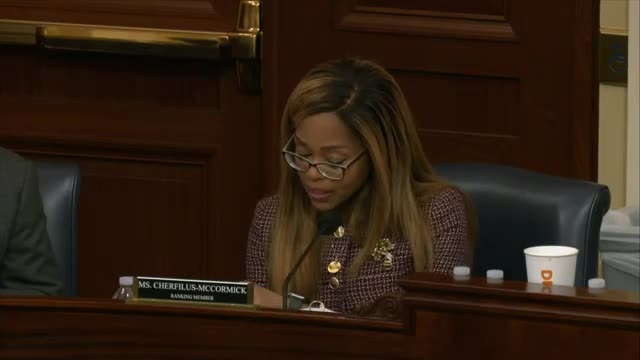VA launches ambitious plan to modernize veteran care access
September 26, 2024 | Veterans Affairs: House Committee, Standing Committees - House & Senate, Congressional Hearings Compilation
This article was created by AI summarizing key points discussed. AI makes mistakes, so for full details and context, please refer to the video of the full meeting. Please report any errors so we can fix them. Report an error »

The ongoing challenges surrounding community care costs are significantly impacting the budget of the Department of Veterans Affairs (VA), as highlighted in a recent government meeting. Officials expressed concern that the rising expenses associated with community care, which is often more costly than direct VA services, could jeopardize the future viability of the VA for upcoming generations of veterans.
During the meeting, it was noted that while community care is essential for providing veterans with necessary healthcare access, the VA currently lacks the capability to demonstrate that veterans receive faster service in community settings compared to VA facilities. In fact, data suggests that, in many regions, the VA's access to care is superior to that of community providers. This discrepancy raises critical questions about the quality and timeliness of care available to veterans.
The committee emphasized the importance of ensuring that veterans receive high-quality healthcare, regardless of whether it is provided by the VA or community providers. A call was made for the VA to develop a system that allows for direct comparisons between VA care and community care, enabling veterans to make informed decisions about their healthcare options.
The meeting also featured testimonies from key officials within the VA, including Sherry Waters, the executive director for the health portfolio in the Office of Information and Technology, and Hillary Peabody, the acting assistant undersecretary for health for integrated veteran care. They discussed the VA's efforts to modernize its scheduling systems, which are crucial for improving access to care. The modernization initiative aims to streamline scheduling processes, allowing veterans to book both virtual and in-person appointments more efficiently.
Overall, the discussions underscored the urgent need for the VA to balance community care costs with the quality of care provided, ensuring that veterans have access to timely and effective healthcare services.
During the meeting, it was noted that while community care is essential for providing veterans with necessary healthcare access, the VA currently lacks the capability to demonstrate that veterans receive faster service in community settings compared to VA facilities. In fact, data suggests that, in many regions, the VA's access to care is superior to that of community providers. This discrepancy raises critical questions about the quality and timeliness of care available to veterans.
The committee emphasized the importance of ensuring that veterans receive high-quality healthcare, regardless of whether it is provided by the VA or community providers. A call was made for the VA to develop a system that allows for direct comparisons between VA care and community care, enabling veterans to make informed decisions about their healthcare options.
The meeting also featured testimonies from key officials within the VA, including Sherry Waters, the executive director for the health portfolio in the Office of Information and Technology, and Hillary Peabody, the acting assistant undersecretary for health for integrated veteran care. They discussed the VA's efforts to modernize its scheduling systems, which are crucial for improving access to care. The modernization initiative aims to streamline scheduling processes, allowing veterans to book both virtual and in-person appointments more efficiently.
Overall, the discussions underscored the urgent need for the VA to balance community care costs with the quality of care provided, ensuring that veterans have access to timely and effective healthcare services.
View full meeting
This article is based on a recent meeting—watch the full video and explore the complete transcript for deeper insights into the discussion.
View full meeting